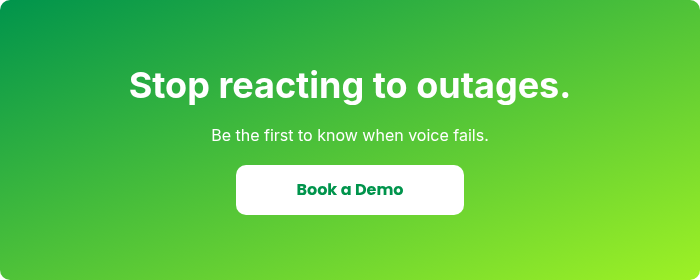 Klearcom
Klearcom
When Voice Goes Down, CX Pays the Price
In a contact center, even a few minutes of voice downtime can ripple into hours of damage. Missed SLAs, frustrated customers, and lost revenue. But outages will happen. What matters is how you respond.
For many operations managers, voice outages are still handled reactively. A storm of customer complaints alerts the team, support scrambles to triage, and hours pass before the root cause is found. The customer experience? Already fractured.
This blog walks through how to build a proactive, resilient contact center incident management strategy to keep voice disruptions short-lived and customer trust intact.
Why Voice Outages Are So Dangerous (and Often Unnoticed)
Unlike full-system outages, voice service issues often hide in plain sight. Silent failures, like dead air or IVR menus that don’t load, may go unreported until churn or complaint volume spikes.
Meanwhile, the business impact is immediate.
Dropped or degraded calls erode CSAT and NPS. Unreachable support lines breach SLAs and compliance. Every minute of voice service downtime costs productivity, sales, and credibility.
In regulated industries, the stakes climb even higher. A failed emergency line or healthcare support number isn’t just a bad experience. It’s a liability.
The Essentials of Contact Center Incident Management
Real-Time Detection with Automated Monitoring
Relying on customer complaints to detect issues is too late. Once a customer tells you there's a problem, the damage is done.
Instead, implement always-on, automated test calls to detect failures as they happen. From IVR errors and carrier issues to one-way audio. With tools like Klearcom Connect, you can simulate real user calls across 100+ countries and get instant alerts when anything breaks.
A Clear Incident Response Plan
Every second counts when voice fails. An effective incident response plan outlines who gets alerted and how fast. It should include triage workflows. For example, is it a carrier outage? An IVR script error? An internal network drop? It should also define communication protocols like status pages, agent scripts, and internal briefings.
Predefined playbooks and on-call rotations reduce panic and restore service faster.
On-Call Support or 24/7 NOC Coverage
Voice doesn’t sleep and neither should your monitoring.
For global contact centers, 24/7 visibility is essential. Either staff your own network operations center (NOC) or partner with a vendor who offers round-the-clock monitoring and triage support. Klearcom’s real-time monitoring and global reach make it possible to cover every timezone without additional overhead.
Root Cause Analysis and Post-Incident Reviews
Once the fire is out, it’s time to learn.
Effective post-incident reviews document what triggered the outage, what detection or response steps worked or didn’t, and what to change so it never happens again.
Detailed logs, test call data, and timestamps are critical here. This is where Klearcom’s audit-ready diagnostics shine. They provide the evidence you need to improve incident response and hold vendors accountable.
Real-World Example: From Chaos to Control
A U.S.-based emergency services organization needed to hit 99.9% uptime on their 911 dispatch line. After adopting real-time test call monitoring, they detected and resolved a critical network issue before it escalated. This avoided a potential $100,000+ outage cost. Even with a small team, automation made resilience possible.
Proactive vs. Reactive: A Mindset Shift
Reactive incident management is firefighting. It’s chasing problems after customers feel the impact. Proactive management is about catching them first.
The benefits of a proactive approach are clear.
Shorter mean time to resolve (MTTR). Fewer escalations. Better agent productivity. Higher customer trust.
By shifting left with real-time alerts, structured playbooks, and end-to-end call visibility, downtime becomes manageable. Not catastrophic.
How Klearcom Supports Modern Incident Management
Klearcom Connect empowers contact center operations teams with real-time test call monitoring across 100+ countries. It offers real-time voice quality grading using NVQA scoring. It supports carrier diversity testing across 340+ carriers to pinpoint regional issues. It provides audit-ready incident data for root cause analysis. And it requires no code or installation.
Whether you're managing in-house voice or working with multiple global vendors, Klearcom brings the clarity needed to protect your uptime.
Conclusion: Every Second Counts
Voice downtime doesn’t have to mean customer churn or SLA breaches. With the right contact center incident management strategy built around real-time detection, clear playbooks, and continuous improvement, you stay ahead of problems.
Downtime is inevitable. Chaos isn’t.


